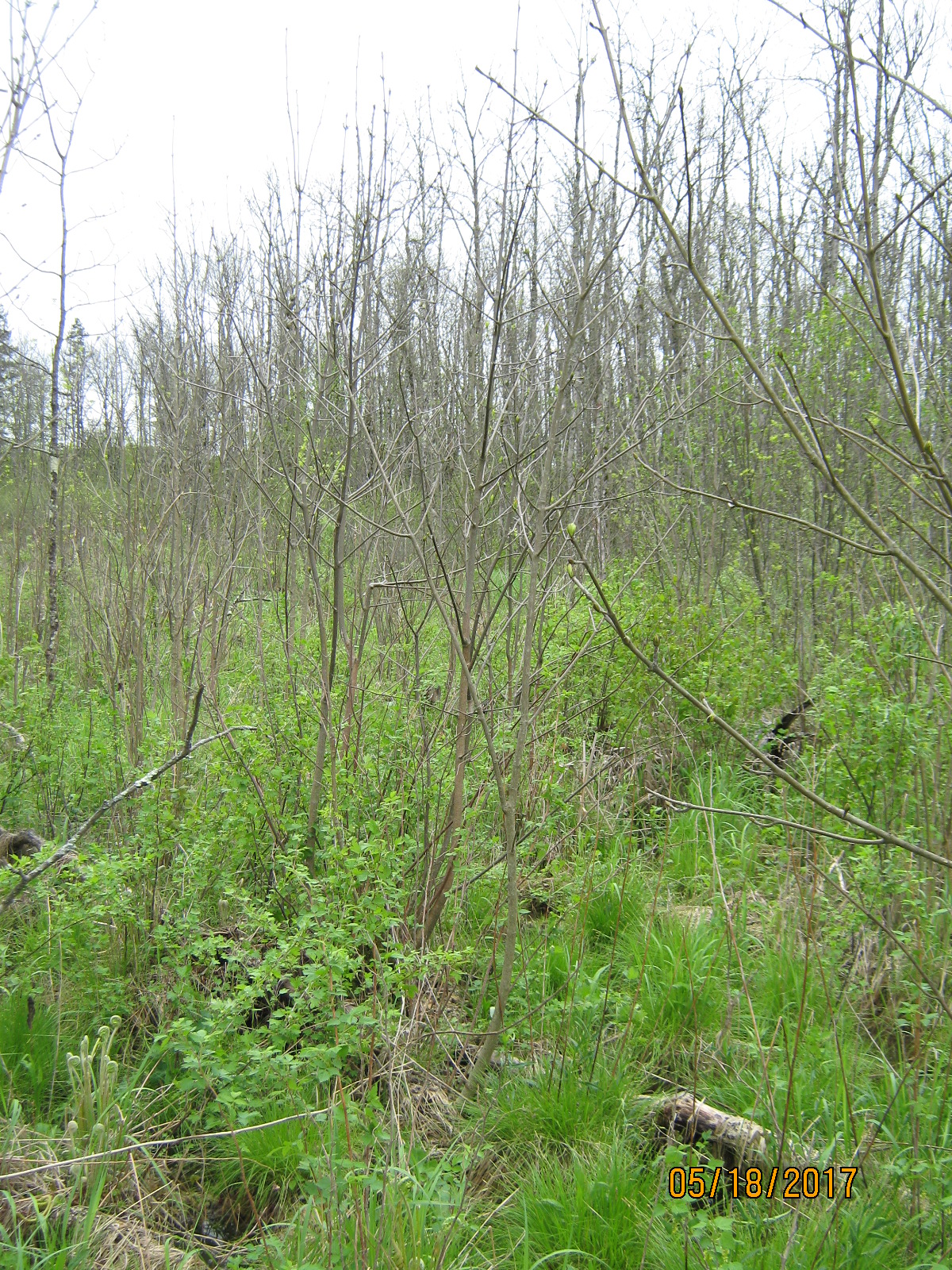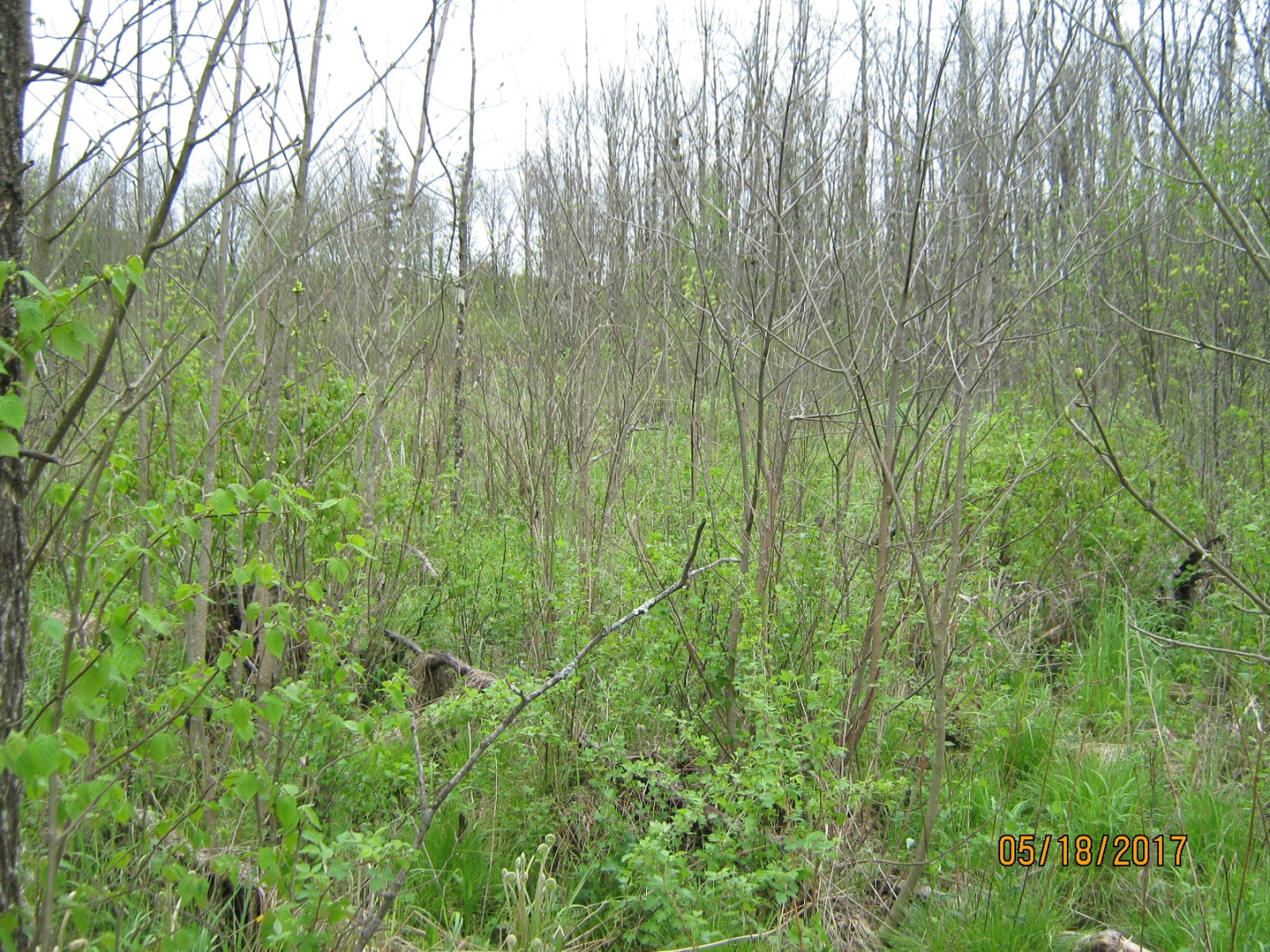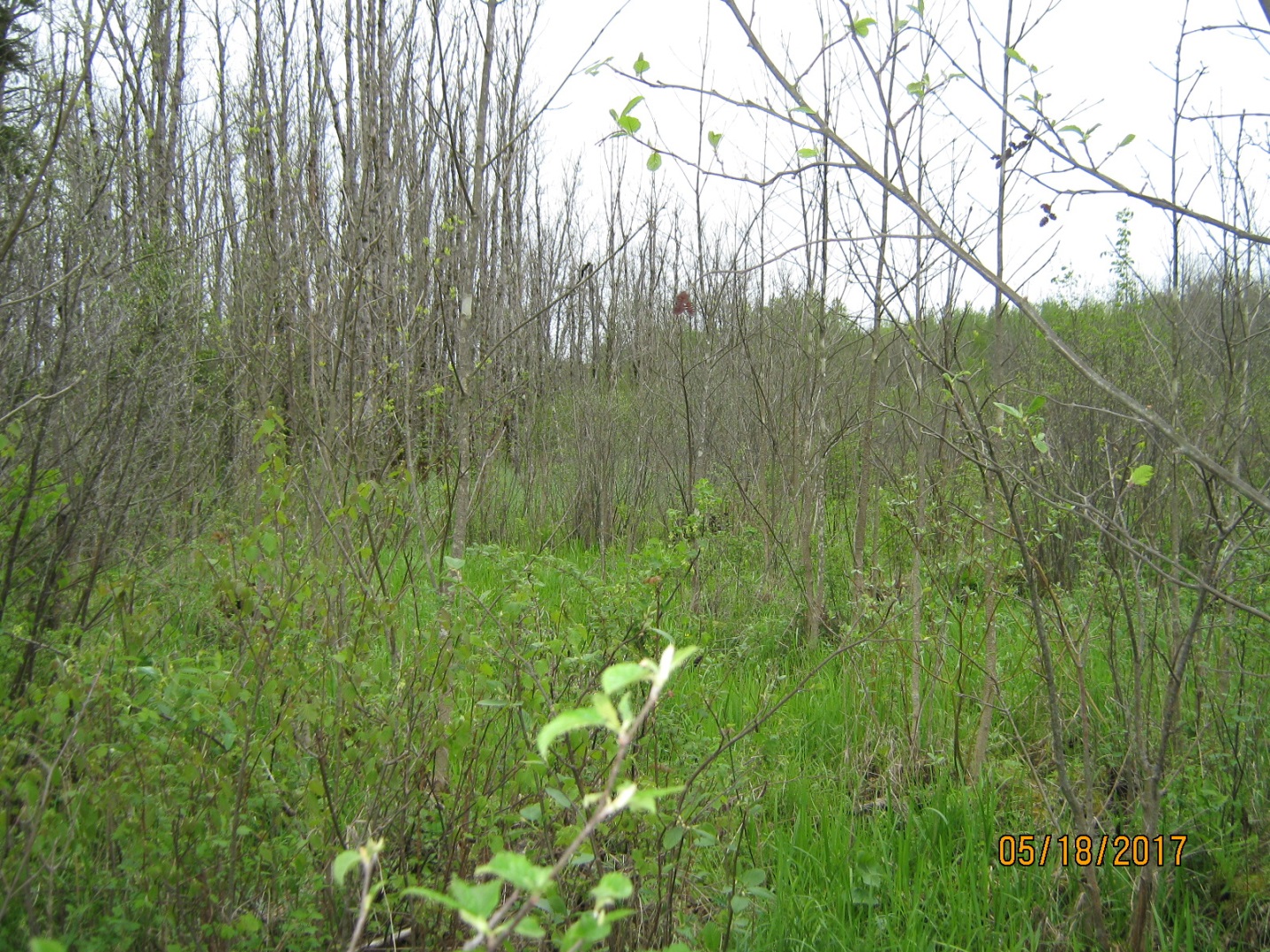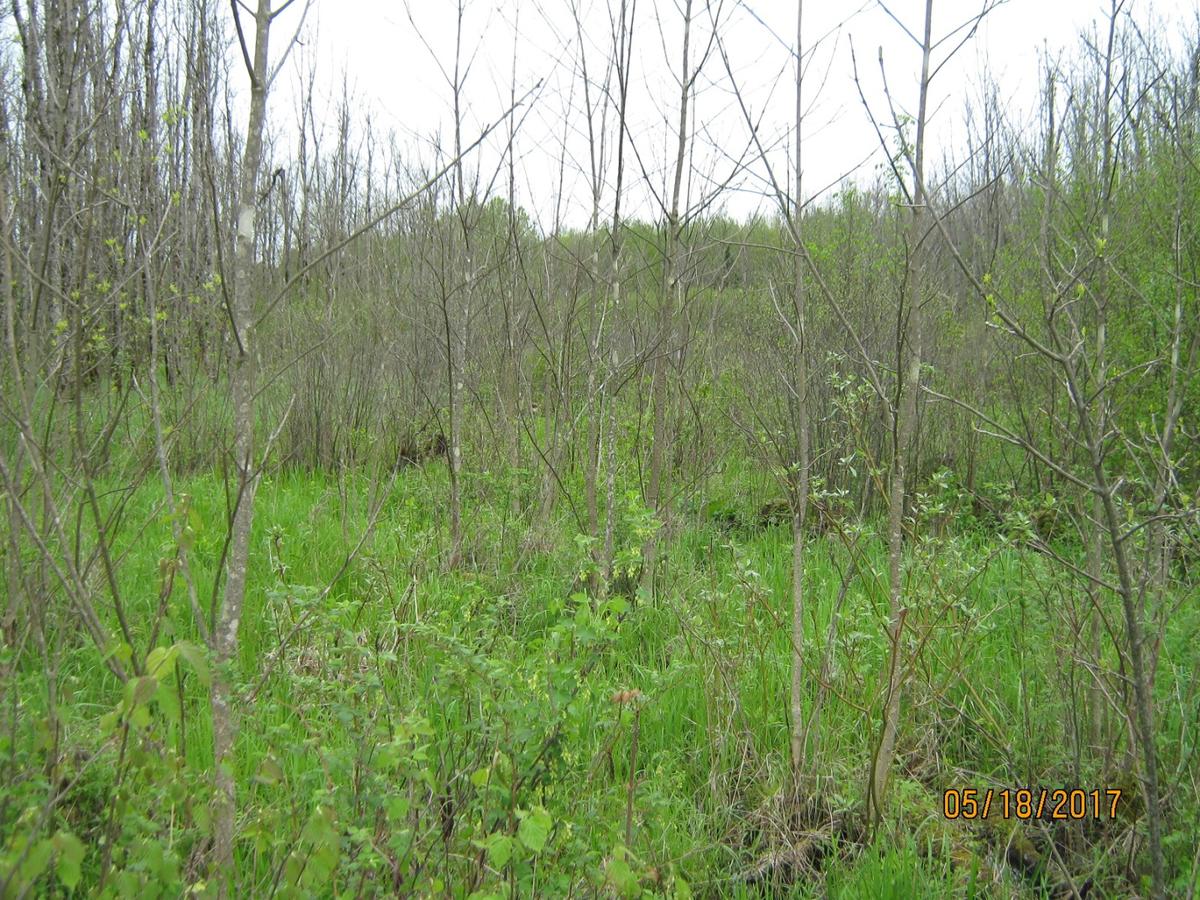Pre-treatment stand description and condition
Stand establishment and management history:
This is a black ash stand with a small component of northern white-cedar. This stand has never been managed for timber purposes since 1940 (the year of origin). This stand borders a farm with a cultivated field directly adjacent to the stand of black ash. This farm consistently has high deer densities.
Pre-treatment species composition:
Black ash (approximately 130 sq ft/acre of basal area); northern white-cedar (approximately 10 sq ft/acre of basal area)
Pre-treatment growth and stocking:
Site index is 45 feet at base age 50 years (for black ash).
Pre-treatment forest health issues:
No visible forest health issues prior to treatment. Emerald ash borer is a concern.
Silviculture Prescription
The prescription is to use a strip clearcut using a strip width of 100 to 200 feet to overwhelm deer browsing potential. The stand was only harvested in the winter. Goal was to leave all non-ash species, including red maple, cedar, elm, birch, balsam fir, hemlock, spruce, and tamarack. Our goal was to harvest a black ash stand as efficiently as possible during frozen conditions and establish a new stand of ash with a mixture of other species.

Figure 1: Strip clearcut in swamp hardwood, Price County, WI
What actually happened during the treatment
The stand was harvested in the winter of 2008. The tops of trees were left scattered within strips which deterred deer browsing.
Post-treatment assessment
The stand was revisited in 2009 and showed vigorous stump sprouting of black ash. The stump sprouting appreared to be above browse line. Some evidence was seen of deer snapping seedlings off of stumps to browse.
Regeneration plots taken in 2017 resulted in 4,050 stems/acre of black ash in 1 to 2-inch saplings. Saplings were of stump sprout origin. The black ash stems are 8-15 feet in height. 900 stems/acre of red maple seedlings of seed origin were also recorded.

Figure 2: Strip clearcut in swamp hardwood, Price County, WI
Plans for future treatments
Due to the imminent threat of emerald ash borer, we moved away from strip clearcuts approximately five to seven years. We have begun to establish black ash sales with a coppice and reserves silvicultural technique. This mimics a clearcut with reserves in patches or seed trees. We also leave all other non-ash species to promote alternative tree species.
Costs and economic considerations
No cost to Price County. Some timber stumpage revenue.
Other notes
Over the past 20 years we have aggressively managed our ash stands in anticipation of emerald ash borer. We have thousands of acres of swamp hardwoods (dominated by black ash). We began strip clearcuts with 30 to 60-foot strips, moved to 100-foot strips, and then to 200-foot strips over approximately 10 to 15 years. The increase in strip width size has been for a number of reasons, namely (1) to overwhelm deer and mitigate browsing, (2) to harvest a higher percentage of the stand, (3) for easier sale set-up, and (4) to promote a wider variety of non-ash tree species. Over the past 5 to 7 years we have gone away from strip clearcuts to a coppice with reserves technique. This leaves patches of ash or seed trees and retains all non-ash species due to primarily difficulty in harvesting in these stands. It is very difficult to harvest in these stands once, let alone twice. This may be more of a factor operationally than the imminent threat of emerald ash borer.
Summary / lessons learned / additional thoughts
Many of our swamp hardwood sales were harvested during the mid 2000’s when we had drier or even drought-like conditions. We harvested many acres and were able to promote non-ash species to establish themselves in these strips. We took advantage of these drier times to regenerate and harvest these stands dampening the impact emerald ash borer will have on Price County forests. We should have harvested more stands and acres during these drier periods. The last five years have been difficult due to a more wet period and warmer winters are not allowing for a more permanent frozen condition needed to harvest these stands.
Strip clearcuts work very well to harvest and regenerate black ash stands. A 200-foot cut strip (with a 200-foot leave) works best. However consider hydrology, depth of muck (soil), water movement (e.g., flow or stagnant water), and the potential for beaver to flood the area. Logging contractors can work efficiently with strip clearcuts due to the processor pre-freezing while cutting trees, letting freeze overnight, and then skidding the next day.

Figure 3: Strip clearcut in swamp hardwood, Price County, WI
This case study was developed with support from the United States Department of Agriculture's National Institute for Food and Agriculture (USDA-NIFA), Renewable Resources Extension Act (RREA). Project #MIN-44-E02, principal investigator Eli Sagor, University of Minnesota.
